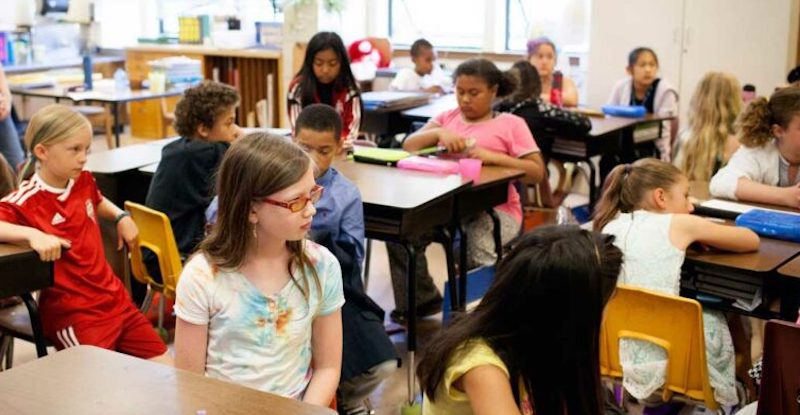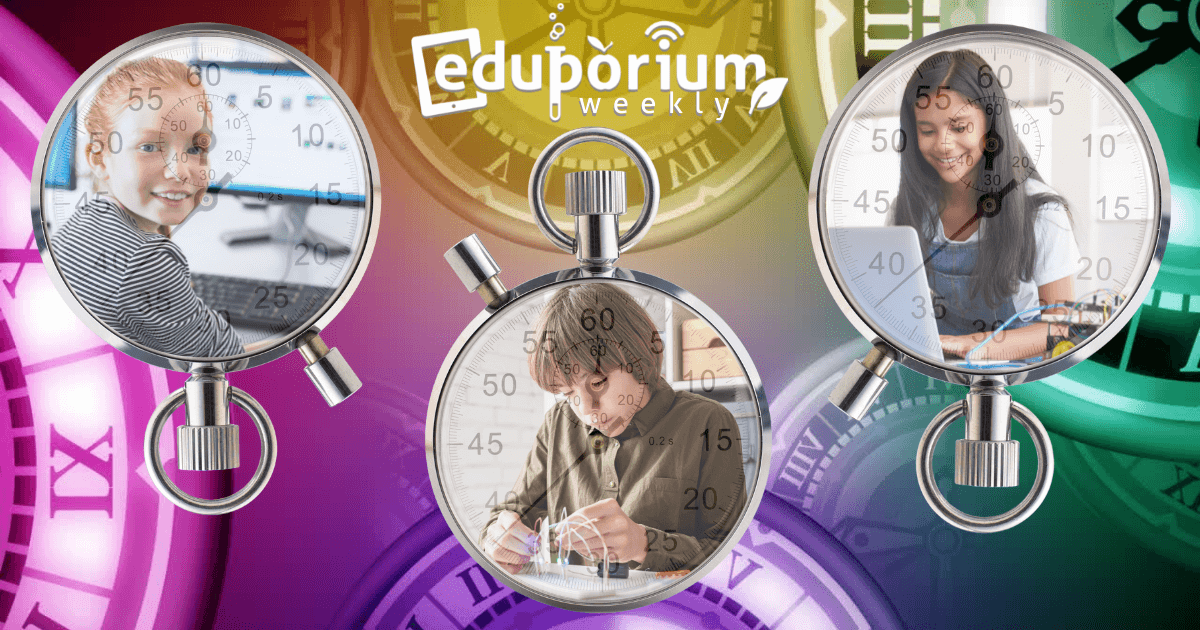During recent years, we've seen an increased focus on the topic of self-paced learning in K-12 classrooms. Self-paced instruction helps guarantee that students develop proficiency in academic concepts and skills before moving on to the next lesson. It's also referred to as competency-based learning and often a part of various personalized college prep instructional plans. Many savvy school and district leaders have actually created positions specifically for programs like these and, as we continue seeing kids get to access those benefits of self-paced learning, it’s a key area of focus. So, we're exploring how educators can implement self-paced learning and what it takes to optimize these strategies.
How Teachers Can Adopt Self-Paced Learning
Self-paced learning is a form of differentiated instruction that teachers can integrate in common learning experiences. Since just about every student learns at a slightly different rate, it’s important for educators to identify which kids may require some extra help and allow them to take time to work through their potential struggles. It could even work the other way as well. Some students tend to finish projects and assignments more quickly than others, which means they'll start their subsequent tasks sooner. The first thing you might think of is creating assignments and instruction that aim to even things out for students. However, it is hard to design lessons that speed some up while slowing others down to meet in the middle. So, trying out self-paced lessons is oftentimes a more effective solution for all students.
Assessing students before beginning.
Some instructors may shy away from self-paced activities with larger sized classes since, theoretically, this would work better with fewer students. With some accommodations, however, it usually works fairly well in larger classes, too. To introduce this model for anybody who might be new, self-paced learning often starts with the individual classroom assessment. Teachers could administer pre-tests before starting a new unit or chapter to gauge each students’ knowledge on key topics. Using pre-test results, educators can identify skills or concepts students have already mastered and where they need to improve. They can use this data to differentiate instruction while helping everyone feel comfortable with learning at their natural speed.
How teachers facilitate self-paced learning.
In self-paced classrooms, teachers can let their students decide how many lessons they feel like they need and how much practice to give themselves before determining if they've mastered something. They should feel comfortable with reading a passage or watching a video as many times as they need to before moving on to their assessment portion. That assessment could highlight one particular knowledge area or skill that children can show they’ve mastered by answering questions correctly. After short mini-assessments, there can be larger assessments that may count for something (or not—up to you). In terms of content, teachers can provide handouts that help children see each concept they should know, questions that align with this concept, what to focus on to master it, and practice questions that'll help. And, honestly, this is one of the best strategies for getting started with self-paced learning in just about any classroom.
Positive Outcomes of Self-Paced Learning
So, self-paced learning does sound promising but teachers, of course, need to know how a model like this would benefit children. When giving self-paced learning a try, teachers need to consider how they will allow students to take responsibility for themselves and their school work, how to give them real opportunities to make decisions about what they work on and for how long, and how to show students that they trust them to do what’s best for how they learn. In most self-paced learning environments, children generally do more thinking for themselves, which is great. Another benefit, however, includes kids realizing that they still must meet deadlines and expectations while working at their own pace.
How self-paced learning improves the classroom experience.
Some ideal outcomes of self-paced learning include students developing a greater sense of independence, choice, and decision making. When they have more say in their learning, children naturally remain engaged for longer periods of time and the degree of their engagement will often improve as well. Some of the other benefits of self-paced learning might come as a surprise but it also allows for more movement and greater organization for starters. When learning at their own pace, for example, students are often free to get up, gather supplies, look something up, or even just stretch their legs. This movement can even help get their creativity flowing as a byproduct, which could generate better results. Another benefit is that organization, which teachers can promote using tiered instruction. This enables students to focus on one task at a time instead of trying to do 10 different things at once.
Results to look for.
Aside from those, self-paced learning also creates relevance, quicker results, personalized feedback, and a boost in students' confidence. When students own their learning goals, they can even use technology tools to drive their own learning and free up additional time for teachers to get to help everyone in each class. As for results, those children who traditionally work more slowly on whole-class assignments might finish their independent work more quickly due to a shift in their learning environment—though that is not a guarantee. With these now quicker results (as long as they show progress), kids can build confidence and, whether or not they initially succeed or struggle, teachers can still personalize feedback to further their achievement.

Designing Self-Paced Learning Experiences
There are those instructors (and kids) who believe that learning is best when students get to work through problems and create content at their own pace. An approach like this one can help them focus on specific tasks and resonate with how it bolsters their development. Often, in the most effective self-paced learning experiences, assignments should encompass specific learning objectives with smaller, more broken-down steps. Careful determination of the instructional objectives also helps educators determine when students have mastered the concepts. Once they have, they're usually then ready to move on to the next project or assignment. Teachers should then check for confirmation of mastery and, if satisfied, allow the student to progress to the next step. Or, if they haven't mastered things, they can then regroup and re-evaluate how to help the student achieve mastery.
Identifying students who need support.
When educators or curriculum coordinators are designing any self-paced learning experiences, there are some features they should keep in mind. One of those is always remembering that both quicker and slower learners should be able to complete their assignments and tasks in accordance with their own abilities and as long as learning conditions are realistic. Also, that greater sense of responsibility that kids experience as a result of self-paced learning tends to carry over into other areas of their education, leading to both better habits, attitudes, and behaviors. When children move at their own pace, teachers can more readily identify who requires attention and give them personal help. It also works well when educators who integrate self-paced learning make a checklist of elements to highlight or include.
Advancing self-paced learning with intent.
During the planning, rollout, and evaluation phases of self-paced learning, students will benefit from certain conditions. Some things to strive for include keeping content relevant and understandable to students with different cultural and ethnic backgrounds, identifying children who might need help before the self-paced learning begins, trusting students who show competencies in specific areas to move forward, and ensuring that students master cognitive and soft skills before beginning higher level learning. Educators should also make sure children are developing the right attitudes toward subjects and their applications, that they have opportunities to check their own progress, and that they feel comfortable with sharing their learning. Doing these few things (and anything else you'd like) can help invigorate self-paced learning in your classroom.
Self-Paced Learning Not Self-Taught Students
Many teachers have found success with self-paced learning but it takes the correct approach to do so. As the title suggests, there's a big difference between children learning at their own pace compared to simply teaching themselves. Going at their own pace is great, especially in certain situations, but teachers should never expect all students to completely teach themselves concepts, content, or skills. Some students may argue that they prefer the self-teaching methods but that’s not what we’re trying to promote either. Though self-teaching can still turn out well, we do not necessarily believe it belongs in every classroom. Self-paced learning, however, is great for student-centered or long-term projects. There's many reasons for this but it's mainly because teachers can better meet student needs and help them increase achievements.
How teachers should affect self-paced learning.
Self-paced learning still requires a good amount of effective pedagogy from instructors. This means that, in addition to their self-paced instruction, teachers must also do a lot of planning before implementation. One common misconception is thinking that since students are absorbing the content or the curriculum at their own pace, they are supposed to learn it entirely on their own as well. Clearly, that qualifies as self-teaching, which is quite different from self-paced learning. Teachers who've tried self-paced learning argue that there should be more teaching going on rather than less. Educators are still teaching and they’re teaching all the time. If they're not teaching content, they're teaching soft skills and, if not soft skills, there's other relevant life lessons. But, first and foremost, they must still teach the content—just at a personalized pace.
Providing feedback and custom instruction.
The biggest adjustment for the teachers in self-paced learning is that they may have 20-30 unique teaching experiences rather than one for the whole class. As students work on assignments independently, teachers need to provide each of them with consistent feedback while, of course, focusing more on any children in the class who require some extra attention. Those personal interactions educators have with their students throughout self-paced learning experiences are perhaps its most powerful aspect. These interactions often help alleviate implementation issues and provide teachers with a clearer sense of what each child needs. It takes hard work for teachers to ensure they've met everybody's needs but this payoff can be phenomenal. Ideally, students will see that, by not doing too much or too little, they can progress at their own pace.

Self-Paced Classroom Logistics
There are two chief underlying ideas that capture the essence of self-paced learning. The first one is that all children can move on to their next batch of content once they’re ready to do so—without having to wait for their teacher or the rest of the class. The other is that children should have access to all of the content they need in order to master it. These include reading materials, practice problems, and other resources so they don’t have to stop to ask their teacher for things. After meeting these needs, instructors can address other logistics to make the self-paced learning experience flow more smoothly. We’re going to pitch a handful of ideas below and purposefully leave some others out. There’s nothing that teachers are absolutely required to do and nothing they should completely avoid. It all comes down to what works best.
Setting deadlines and delivering content.
To keep self-paced classes organized throughout an entire unit (or school year), here are some logistics to consider. One of the most important is creating unit pacing guides and checklists for kids. By referencing these, kids can see which order to complete certain parts of assignments without needing instructions for what's next. Educators also need to set and communicate deadlines so kids learn how to be accountable for their responsibilities. Setting mini deadlines for the end of each week, for example, could help children identify their prioirities. As for instruction, educators should determine how their children prefer to receive content. Some might like reading it, others might enjoy watching videos, and there might be some others who learn best with educational videos teachers create themselves!
Monitoring student progress in self-paced learning.
Teachers should also carefully consider how they’ll have students master this content—worksheets, online exercises, hands-on activities, or something else. They’ll also need to establish a routine for checking each students' work, which could include checking everything once students complete it or providing an answer key for students to reference once they’re all done. In any case, teachers should always try to be on top of monitoring student progress. Just because they may be completing work, it doesn’t necessarily mean they are learning all they need to know. Finally, for assessing students, teachers can still give tests but students don’t have to take them until fully ready. If administering tests to different kids on different days, instructors just need to figure out where to send different groups. They may also create multiple versions to make sure every student is learning and not overwhelmed with the pace.
If you've tried self-paced learning in your classroom, let us know how it's been by commenting below. For the latest EdTech, STEM, and 21st century education news, follow Eduporium on X and Instagram. Like us on Facebook, too, or sign up for our newsletter for all latest product announcements and offerings. If you have an idea for an Eduporium Weekly theme, message us on social media or comment below.




1 Comment